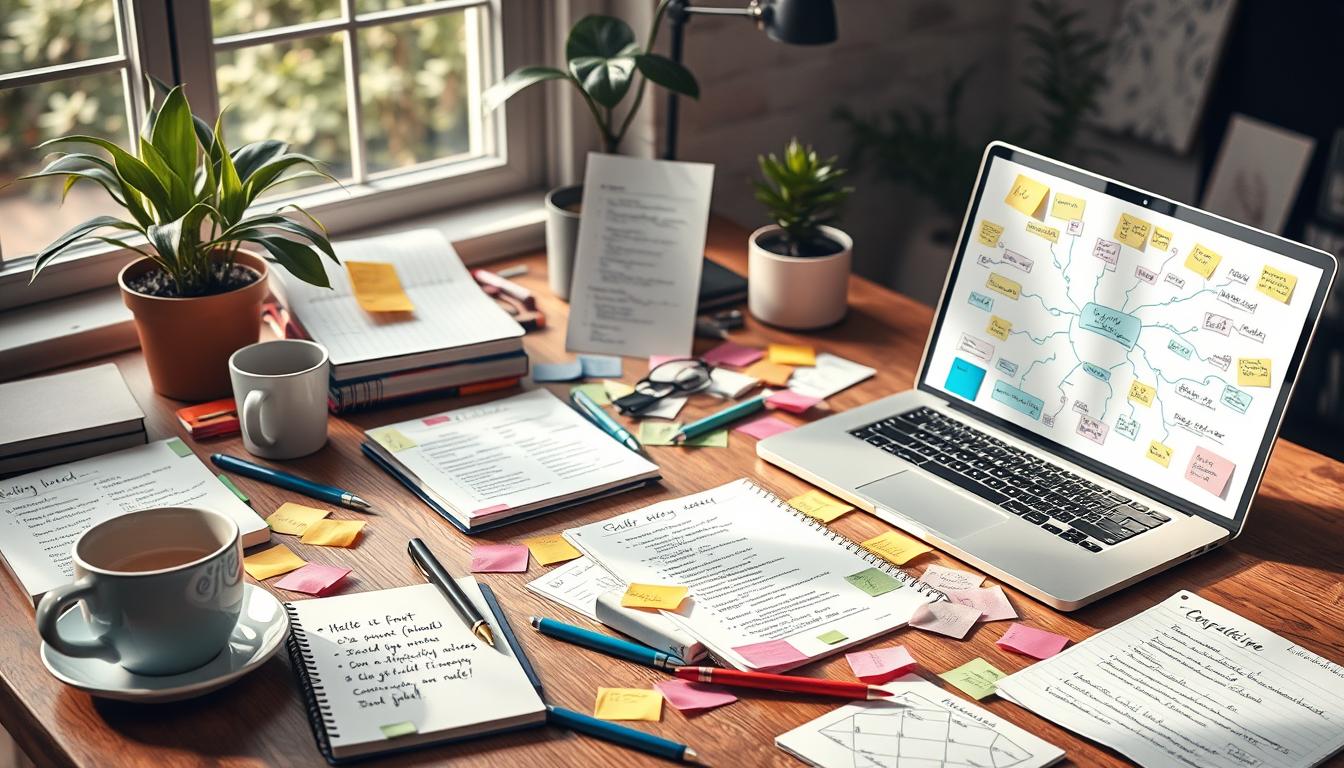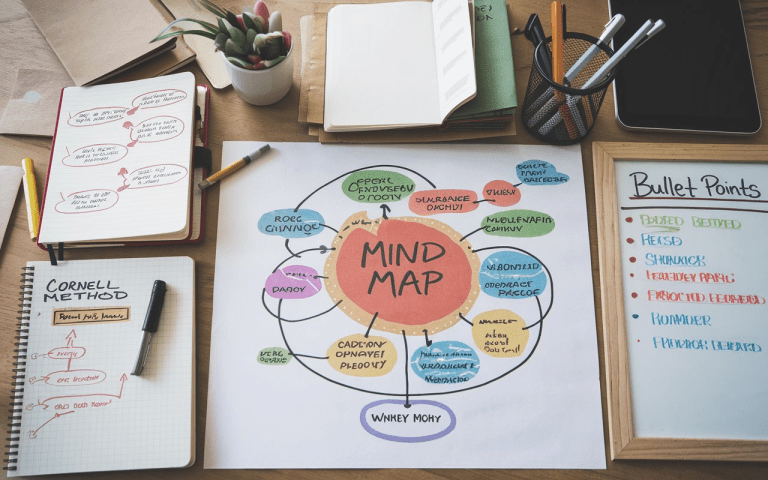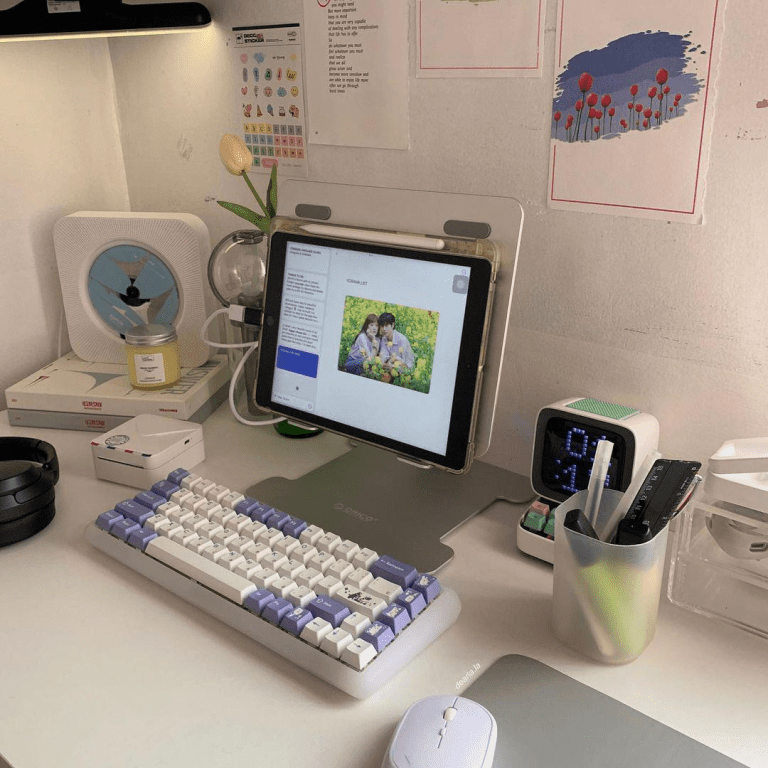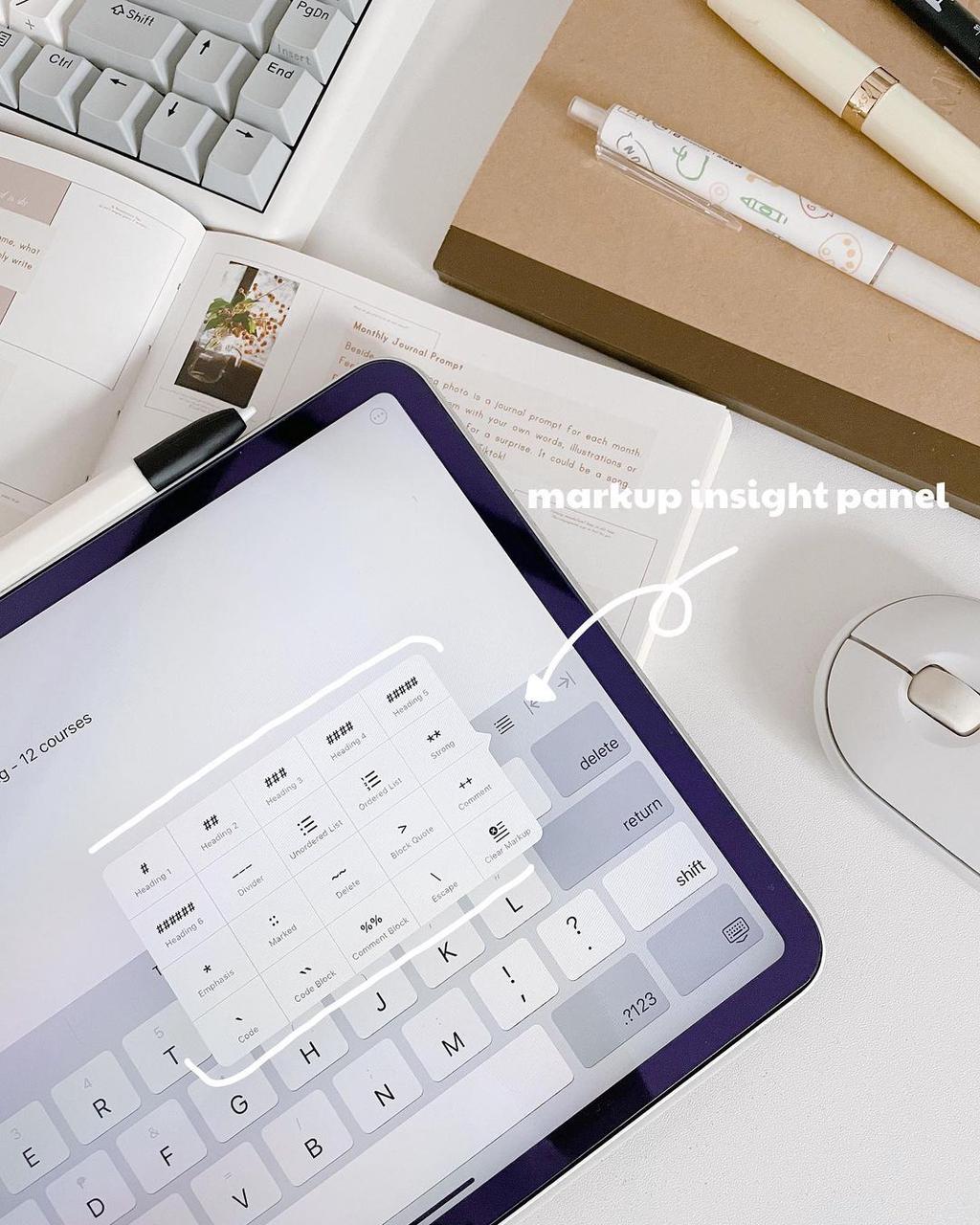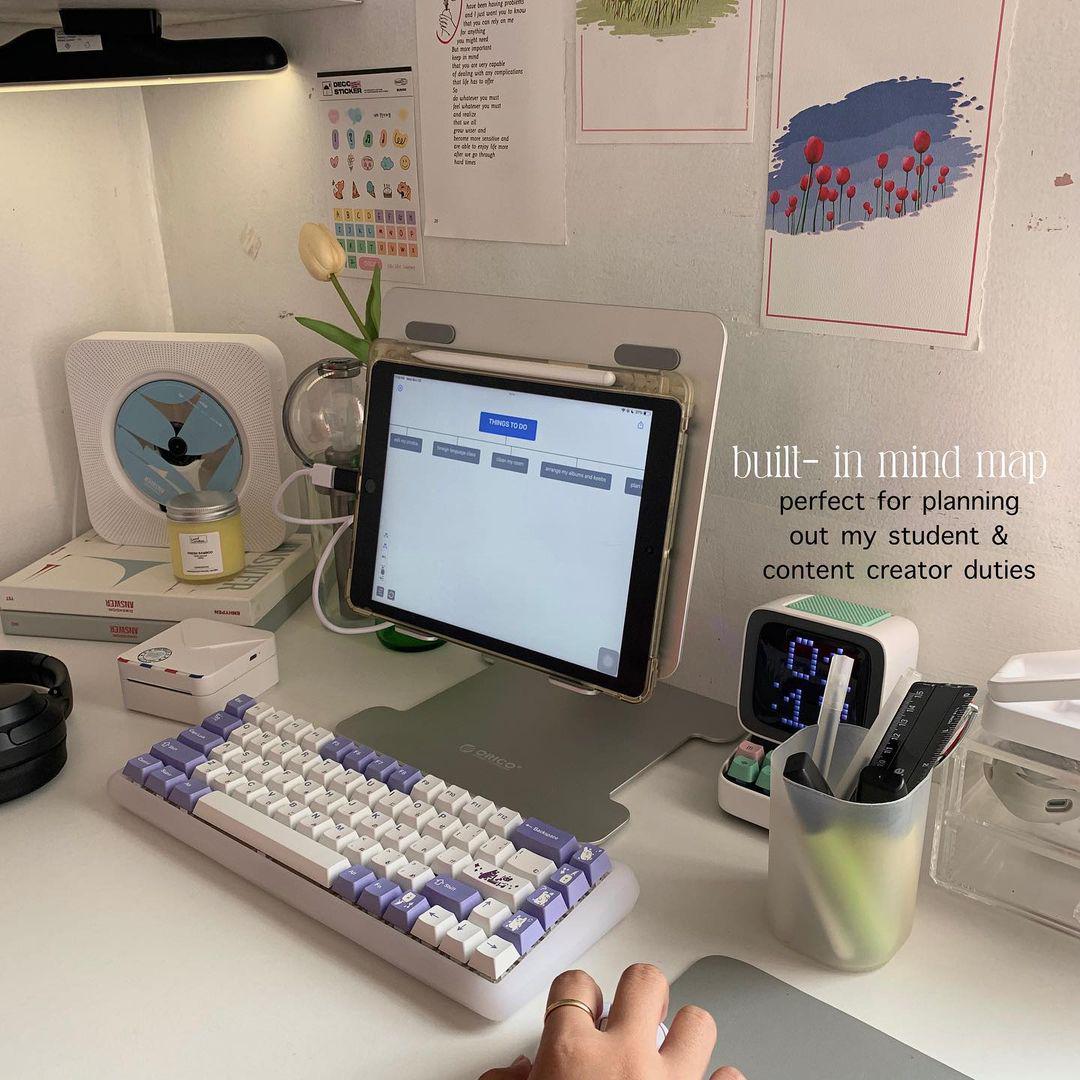Mastering How to Take Outline Notes Effectively
Emma, a college student, often felt overwhelmed in lectures. She struggled to keep up with new ideas. Then, she learned about outline note-taking. This changed her learning and helped her succeed.
Taking notes is key for students and workers. It helps us keep info, sort our thoughts, and remember important stuff. But not all ways of taking notes work the same. With lots of computer tools around, it might seem like there’s a quick way to take good notes. But really, getting good at outline notes is an old trick that can make your study skills way better. In this article, we’ll look at why outline notes are good, the best tool for taking notes, and how visual ways of learning can make your notes even better. So, if you’re getting ready for a test, a work meeting, or a big project, keep reading to learn the secrets of taking good outline notes.hension, increase your retention, and ultimately improve your overall performance.
Outline note-taking helps with active reading techniques and is a great visual learning method. It’s one of the most effective note-taking strategies out there. Many people find it better than just writing everything down.
The Cornell note-taking system is a popular way to do this. It helps you sort your notes into main ideas and details. This system is great for students and workers who want to remember more.
We’ll show you how to take outline notes step by step. Whether you’re a student trying to do well on tests or a worker wanting to do better at your job, this will help you learn how to take notes that really work.uggle to capture and remember information. But, learning outline note-taking can improve understanding and memory. It can lead to better grades and success.
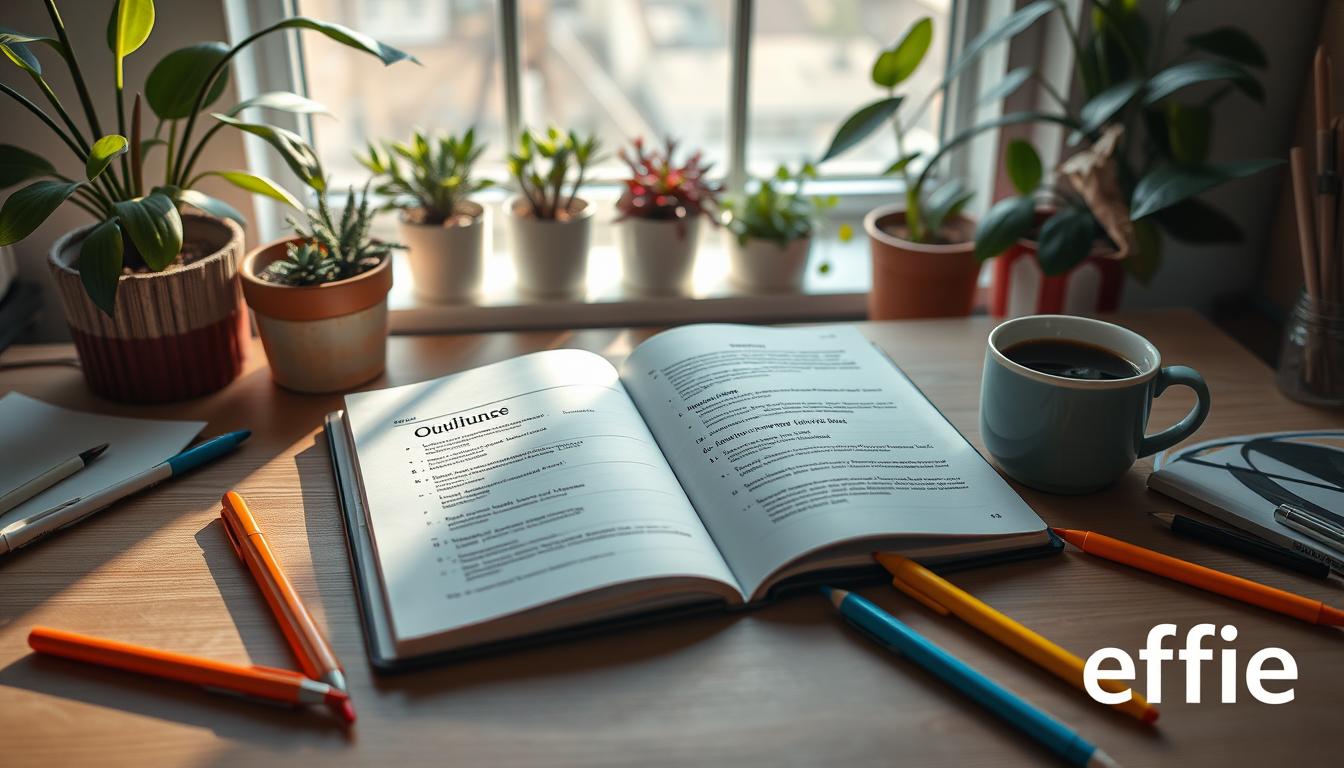
This article will look at outline notes and why they’re good. We’ll give step-by-step tips and ways to make it work for you. Whether you’re in school or working, this guide will help you take better notes.
Main Points
- Outline notes can really help you understand and remember class stuff, leading to better grades.
- The outline way gives a clear structure for sorting info, helping you focus and work better.
- Getting good at outline notes can help students and workers in many fields and learning places.
- Making the outline method fit your own way of learning can make it work even better.
- Adding pictures to outline notes can help you understand and remember more.
Introduction to Effective Note-Taking Techniques
Learning to take good notes is key to doing well in school or work. It helps you get and remember info better. It also makes tricky topics easier to sort out. Knowing about different ways to take notes helps you pick the best one for you.
Importance of Note-Taking for Learning and Retention
Studies show 82% of students take notes to focus and get main ideas. Also, 65% say good notes help them listen better and remember more. And 75% think short, clear notes are important for studying. So, taking notes is really important for learning and remembering things.
Overview of Different Note-Taking Methods
There are many ways to take notes, each fitting different learning styles and topics. These include:
- Cornell Method: This method uses a page layout for main ideas, details, and summaries.
- Mapping Method: It’s a visual way to organize info, showing how ideas connect.
- Charting Method: Great for lectures full of facts, it uses tables to present info.
- Sentence Method: This method captures key points in one sentence each.
Knowing the strengths of these methods lets you choose the best ones for your learning style and topics. This can greatly improve your success in school or work.
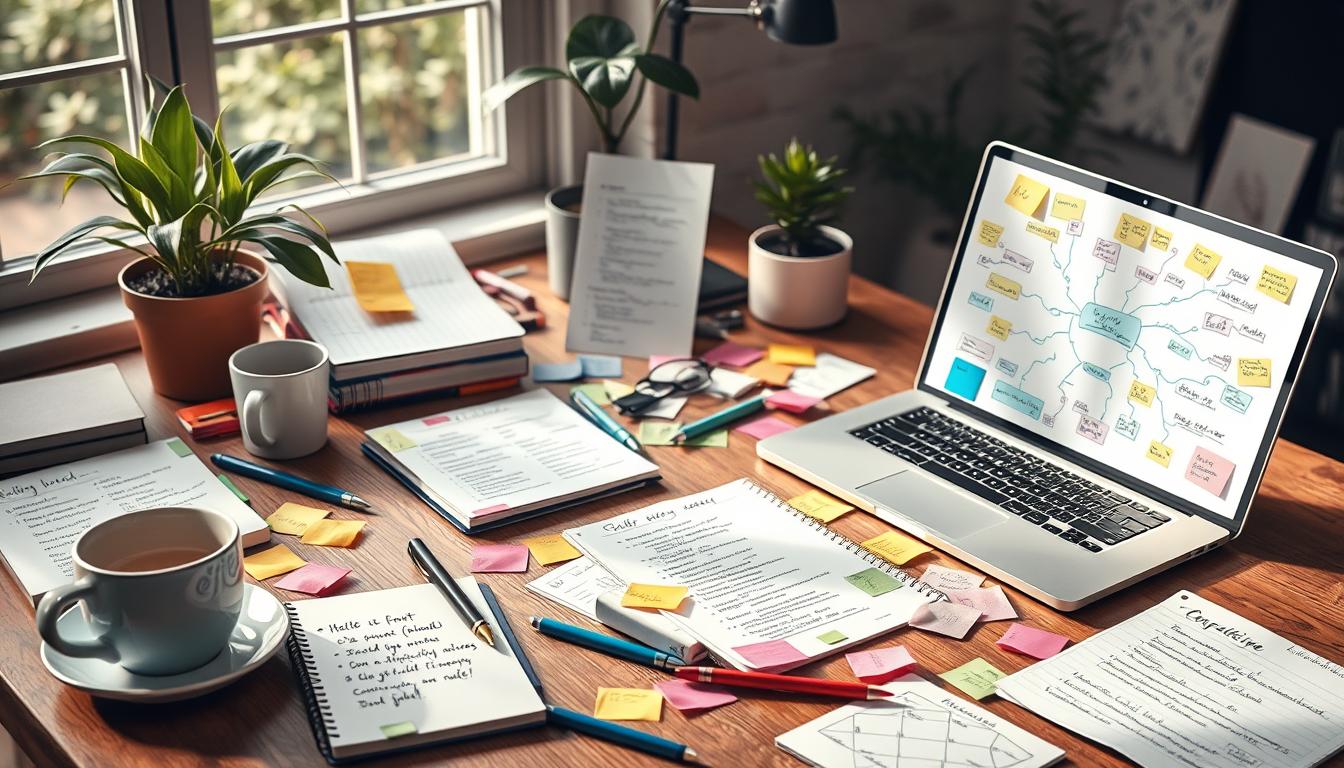
The Outline Note-Taking Method
The outline note-taking method taking notes is a top pick for sorting and writing down info. It uses a step-by-step structure to show how big ideas, smaller ideas, and details fit together. This method helps you understand better and makes it easier to find and remember stuff later.
Benefits of the Outline Method
This method has many advantages:
- It creates a clear hierarchy of info with indentation, making it simpler to organize information.
- The structure helps students understand the relationships between main ideas and details, which improves retention.
- Outline notes are easy to review and revise before exams, focusing on what you know well and what you need to remember.
- Studies show outline note-takers capture about 40% of what’s said in lectures, more than traditional note-takers.
Step-by-Step Guide to Taking Outline Notes
Here’s how to take great outline notes:
- Get your materials ready, like paper, pens, and any course materials you need.
- Spot the main topics in the lecture or reading and use them as your main points.
- For each main point, list the subtopics or details, indenting them to show the hierarchical structure.
- Add relevant facts, examples, and explanations under each subtopic, using bulleting or indentation to keep it neat.
- Look over your outline notes often to help you learn and make sure you get the main ideas.
Learning the outline way helps you sort info better, understand more, and remember for a long time.
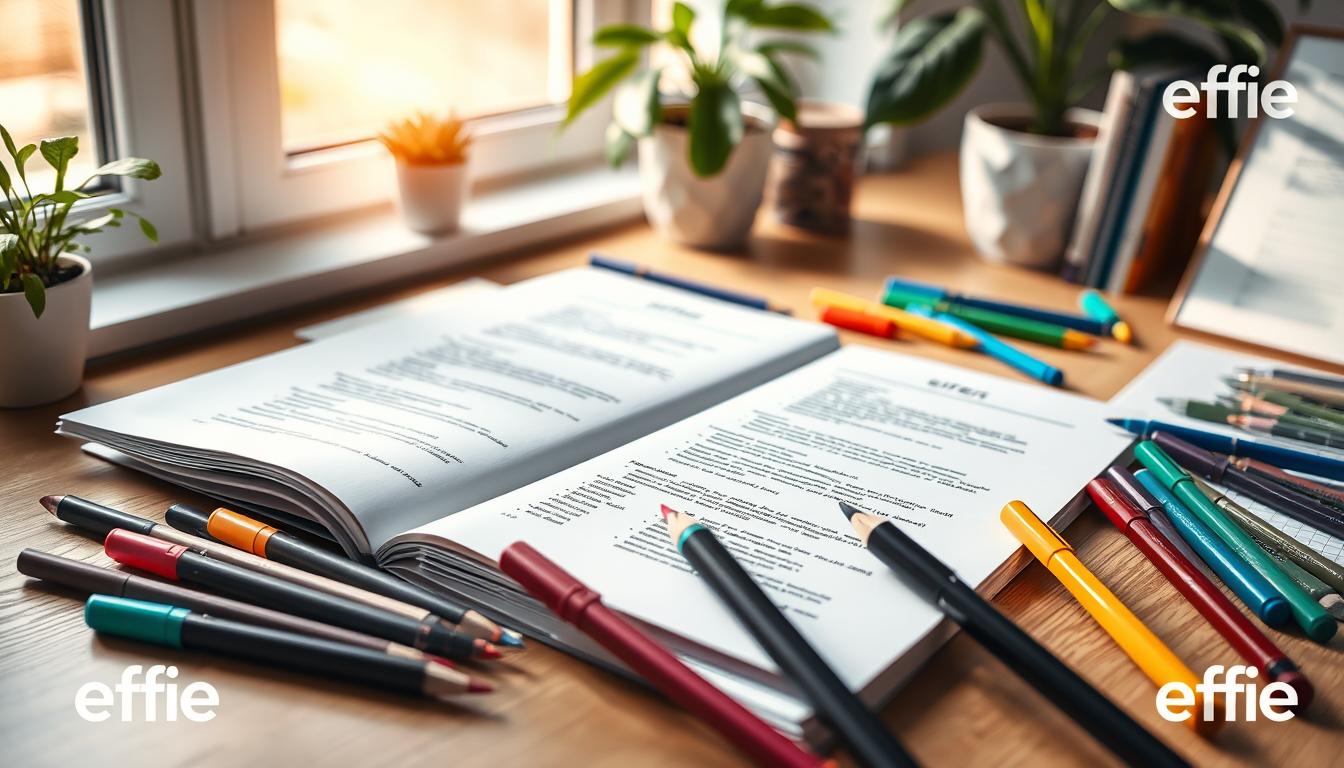
Mastering the Art of how to take outline notes
Getting good at outline notes takes practice and making it fit you. By using tips and changing the method to match how you learn, you can get the most from this powerful note-taking trick.
Tips for Effective Outlining
Here are some ways to get the most from outline notes:
- Spot the main topics and subtopics to organize your notes clearly.
- Use consistent symbols like numbers, letters, or hyphens to show importance levels.
- Focus on the key info and skip the extra details to keep your notes concise.
- Check and update your notes often to keep them tidy and current.
Adapting the Method to Your Learning Style
The outline method is great, but it might not work for everyone. Try different ways to see what works best for you:
- Visual Learners: Add pictures, charts, or colors to your outlines for extra help.
- Auditory Learners: Record lectures and listen to them with your notes.
- Kinesthetic Learners: Use a digital app that lets you draw or write your outlines.
Adjusting the outline method to fit your learning style can boost your note-taking skills. It can also help you understand material better and lead to success in school or work.
“The outline method of note-taking can improve academic performance by speeding up the learning process and helping students draw connections between concepts.”
Incorporating Visual Elements and Diagrams
Using visual elements and diagrams can make your note-taking better. Techniques like mind mapping, concept mapping, and charting help you see how ideas connect. They make complex processes clear and help you maximizing learning efficiency.
Effie’s mind mapping feature takes this even further by allowing you to switch seamlessly between a traditional outline and a visual learning methods. This flexibility ensures that both linear and visual thinkers can find their ideal way of organizing and processing information.
Adding visuals to your notes helps with different learning styles. It boosts your ability to spot patterns and connections. This leads to better retention and use of the information.
- Mind Mapping: This method lets you visually show your thoughts and their connections. Start with a main idea and add related ideas around it. This helps you see the big picture and how things are linked.
- Concept Mapping: Like mind mapping, but it focuses on showing how key concepts relate. It’s great for complex topics, helping you organize and understand the main ideas.
- Charting and Diagrams: Using charts and diagrams in your notes is a strong way to present data and show processes. These visuals make information easier to grasp and remember, especially for numbers or steps.
It’s important to use visuals wisely. They should add to your outline notes, not take their place. Mixing outline structure with visual aids creates a complete and engaging note-taking system. This system suits different learning styles and boosts your understanding and memory of the material.
Conclusion
Mastering outline notes is key to doing well in school and work. This organized way of taking notes helps you process and remember info better by organizing information visually. It’s important to find a way that fits how you learn and what you’re studying.
With practice and being flexible, you can get better at taking notes. The outline way is great for sorting ideas for talks, projects, or essays. It helps you focus on the main points and understand stuff better.
Effie’s ability to mix outline notes with mind maps, plus its simple design, makes it perfect for students and workers. It makes taking notes easier and keeps you focused on what’s important, helping you understand and remember better.
Learning the best practices of the Outline method can change the game for you. It makes you more efficient and successful in reaching your goals. This method is a powerful tool for lifelong learning.
FAQ
What is the Outline note-taking method?
The Outline method is a way to take notes that sorts info in an organized way. It helps you focus on main topics, subtopics, and details. This makes it easier to understand and remember info.
What are the benefits of using the Outline method?
Using the Outline method improves your understanding and memory. It makes it easier to find information later. This is because your notes are organized in a logical way.
It also helps you see how different ideas are connected.
How do I implement the Outline note-taking method?
First, gather what you need to take notes. Then, outline the main topics. Next, break down these topics into subtopics.
Add thoughts and facts that support these subtopics. Include details and examples too. Finally, review your notes often to help you remember the information.
What tips can I use to optimize the Outline method?
To get better at the Outline method, focus on the main topics. Use consistent indentation and symbols. Only take notes on what’s important.
Review and improve your notes regularly. It’s also key to adjust the method to fit how you learn best.
How can I incorporate visual elements and diagrams into my Outline notes?
You can use mind mapping, concept mapping, and charting to enhance your Outline notes. These techniques help you see how ideas are connected. They also make complex topics easier to understand.
With Effie, you can easily switch between outline notes and mind maps, letting you see tricky ideas while keeping notes organized.
Source Links
- Mastering the Art of Effective Note-Taking – https://studentlearningcenter.appstate.edu/resources/note-taking
- Mastering Note-Taking: Strategies for Effective Learning – https://arshren.medium.com/effective-notes-taking-techniques-8a17a71b14e3
- 5 Effective Note-Taking Techniques Compared – https://quizgecko.com/blog/best-note-taking-methods
- Effective Note-Taking in Class – Learning Center – https://learningcenter.unc.edu/tips-and-tools/effective-note-taking-in-class/
- Techniques and Tips for Listening and Note Taking – https://www.student.unsw.edu.au/notetaking-tips
- The Outline Note-Taking Method: A Beginner’s Guide – E-Student – https://e-student.org/outline-note-taking-method/
- Outline Method of Note-Taking – https://upchieve.org/blog/outline-method-of-note-taking
- Get Better Results With The Outline Note-Taking Method – https://alexandertutoring.com/math-physics-resources/study-tips/a-guide-to-the-outline-note-taking-method/
- Engaging and Accessible – https://www.aph.org/app/uploads/2024/04/Mastering-the-Art-of-Effective-Notetaking.pdf
- Notes Refined: Mastering the Art of Effective Note-Taking – https://medium.com/@notiondose/notes-refined-mastering-the-art-of-effective-note-taking-83c2278aa42b
- Guided Note-Taking • Teacher Thrive – https://teacherthrive.com/guided-note-taking/
- Note-taking | Center for the Advancement of Teaching Excellence – https://teaching.uic.edu/cate-teaching-guides/inclusive-equity-minded-teaching-practices/note-taking/
- The Outline Note-Taking Method: Steps, Benefits, and When To Use | Goodnotes Blog – https://www.goodnotes.com/blog/outline-note-taking-method
- PDF – http://jnkvv.org/PDF/0504202012211034200630.pdf
- Microsoft Word – LD Conclusions LH.docx – https://www.newcastle.edu.au/__data/assets/pdf_file/0009/333765/LD-Conclusions-LH.pdf

